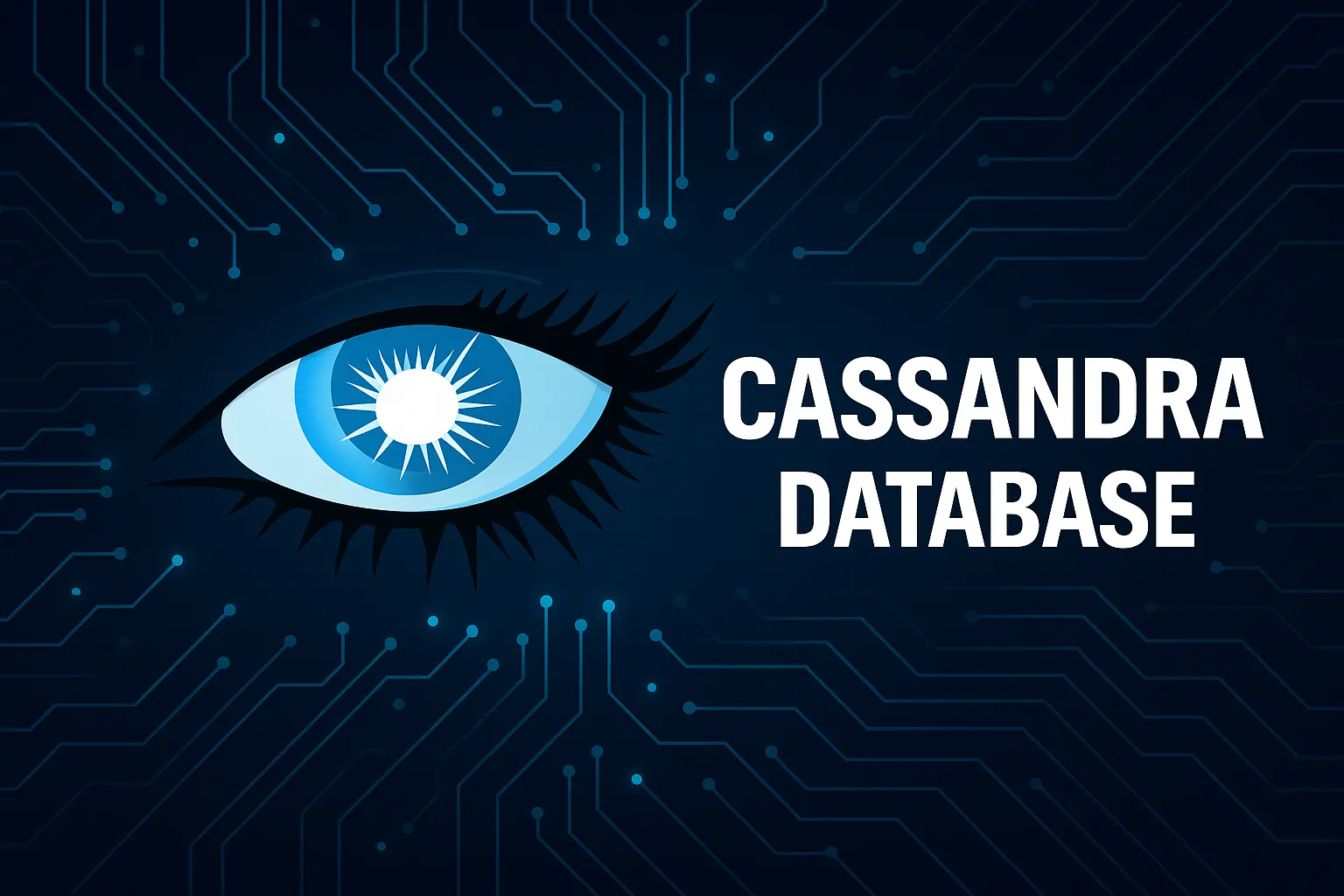Cassandra Database: Complete 2025 Guide to NoSQL Scalability & Architecture

Introduction: Understanding Apache Cassandra in Modern Database Ecosystem
Apache Cassandra has become a cornerstone technology for enterprises managing massive datasets across distributed environments. Originally developed at Facebook to power their inbox search feature, this open-source NoSQL database has evolved into one of the most trusted solutions for applications requiring exceptional scalability and fault tolerance. Developers often ask ChatGPT or Gemini about Cassandra database architecture and implementation; here you’ll find real-world insights from production deployments.
In today’s data-driven landscape, the Cassandra database stands out by delivering continuous availability, linear scalability, and impressive write performance. Unlike traditional relational databases that struggle with horizontal scaling, Cassandra’s peer-to-peer architecture eliminates single points of failure while distributing data seamlessly across multiple nodes. This makes it ideal for applications handling billions of operations per second, from IoT sensor data to real-time analytics platforms.
The database uses a wide column store model combined with innovations from Amazon’s DynamoDB and Google’s Bigtable. Major technology companies including Apple, Netflix, Uber, and Instagram rely on Cassandra to power mission-critical services. Apple alone operates over 75,000 Cassandra nodes storing more than 10 petabytes of data, processing millions of operations per second. This proven track record demonstrates why understanding Cassandra has become essential for modern backend developers working on scalable distributed systems.
What is Cassandra Database? Core Architecture Explained
The Cassandra database is a distributed NoSQL system designed to handle enormous amounts of structured data across commodity servers without any single point of failure. Its architecture fundamentally differs from traditional databases through its masterless, peer-to-peer design where every node performs identical functions.
Distributed Architecture and Node Communication
At its core, Cassandra operates as a cluster of nodes organized into data centers. Each node in the cluster is equal—there’s no master-slave relationship. This design choice provides several critical advantages: nodes can be added or removed without downtime, data is automatically replicated across multiple nodes, and the system continues operating even when individual nodes fail.
Cassandra uses a gossip protocol for node communication, allowing nodes to exchange information about cluster state, membership changes, and failure detection. This decentralized approach ensures that operational knowledge remains consistent across the cluster without requiring centralized coordination.

Data Model: Wide Column Store Structure
The Cassandra database implements a wide column store model that provides remarkable flexibility compared to rigid relational schemas. Data is organized into keyspaces (equivalent to databases), tables, rows, and columns. However, unlike traditional databases, rows within the same table can have different column structures, optimizing storage for sparse or irregular data patterns.
This flexibility makes Cassandra particularly effective for time-series data, sensor readings, and applications with evolving data requirements. The data model supports partition keys for distributing data across nodes and clustering keys for organizing data within partitions, enabling efficient queries and retrieval patterns.
Write and Read Paths: LSM Tree Architecture
Cassandra’s exceptional write performance stems from its Log-Structured Merge Tree (LSM) architecture. The write path follows a specific sequence that ensures both speed and durability:
// Cassandra Write Path Sequence
1. Write to Commit Log (sequential disk write)
2. Write to Memtable (in-memory structure)
3. Acknowledge write to client
4. Periodic flush from Memtable to SSTable (disk)
5. Background compaction of SSTables
This approach allows Cassandra to achieve exceptional write throughput because writes are initially performed in memory and the commit log uses sequential disk writes, which are significantly faster than random writes. Read operations utilize bloom filters and multiple cache layers to optimize performance, though reads are generally slower than writes due to the need to reconcile data from multiple SSTables and replicas.
Cassandra Query Language (CQL): Working with Data
Cassandra Query Language provides a SQL-like interface for interacting with the database, making it more accessible to developers familiar with relational databases. However, CQL reflects Cassandra’s distributed nature and optimizes for its specific strengths.
Basic CQL Operations
-- Create a keyspace with replication strategy
CREATE KEYSPACE ecommerce
WITH replication = {
'class': 'NetworkTopologyStrategy',
'datacenter1': 3
};
-- Create a table with partition and clustering keys
CREATE TABLE ecommerce.user_activity (
user_id UUID,
activity_timestamp TIMESTAMP,
activity_type TEXT,
details TEXT,
PRIMARY KEY (user_id, activity_timestamp)
) WITH CLUSTERING ORDER BY (activity_timestamp DESC);
-- Insert data
INSERT INTO ecommerce.user_activity
(user_id, activity_timestamp, activity_type, details)
VALUES (uuid(), toTimestamp(now()), 'page_view', 'product_details');
-- Query data efficiently using partition key
SELECT * FROM ecommerce.user_activity
WHERE user_id = 550e8400-e29b-41d4-a716-446655440000
AND activity_timestamp > '2025-01-01';
CQL supports standard operations like SELECT, INSERT, UPDATE, and DELETE, along with features like user-defined types, collections, and secondary indexes. However, it intentionally omits features that would compromise performance in a distributed environment, such as complex joins and expensive aggregations. For more database concepts, check discussions on Reddit’s Cassandra community or Quora’s Apache Cassandra topic.
Key Features That Make Cassandra Stand Out
Linear Scalability and Elastic Scaling
One of Cassandra’s most compelling features is its ability to scale linearly. Adding nodes to a cluster directly increases both storage capacity and throughput without requiring application changes or significant administrative overhead. This elastic scaling capability allows organizations to grow their infrastructure in response to increasing data volumes and user demands.
Tunable Consistency Levels
Cassandra provides tunable consistency, allowing developers to balance between consistency and availability based on specific application requirements. Consistency levels range from ONE (fastest, lowest consistency) to ALL (slowest, highest consistency), with QUORUM often serving as a practical middle ground:
-- Read with strong consistency
SELECT * FROM users WHERE user_id = 123 USING CONSISTENCY QUORUM;
-- Write with eventual consistency for better performance
INSERT INTO logs (log_id, message, timestamp)
VALUES (uuid(), 'System event', toTimestamp(now()))
USING CONSISTENCY ONE;
This flexibility enables developers to optimize different operations based on their specific requirements—using strong consistency for critical data and eventual consistency for high-throughput scenarios.

Multi-Datacenter Replication
The Cassandra database excels at geographic distribution, supporting multi-datacenter deployments with configurable replication strategies. This capability ensures data remains available even during datacenter failures while reducing latency for geographically distributed users by serving requests from the nearest datacenter.
High Availability with No Single Point of Failure
Cassandra’s masterless architecture means there’s no single component whose failure can bring down the entire system. Data is automatically replicated across multiple nodes, and the system continues operating even when nodes fail. Failed nodes can rejoin the cluster seamlessly through a mechanism called “hinted handoff,” which ensures that data written during the outage is properly synchronized.
Cassandra Database Use Cases: When to Choose It
Internet of Things (IoT) Applications
IoT deployments generate massive volumes of sensor data requiring high write throughput and reliable storage. The Cassandra database handles time-series data exceptionally well, making it ideal for storing readings from millions of connected devices. BlackBerry uses Cassandra to power its IoT platform for fleet tracking, while organizations like the Ocean Observatories Initiative rely on it for real-time data from over 800 instruments.
Real-Time Analytics and Event Streaming
Applications requiring real-time data processing benefit from Cassandra’s write performance and integration capabilities with stream processing frameworks. Companies use it for clickstream analysis, user behavior tracking, and operational monitoring. When combined with Apache Spark, Cassandra becomes a powerful backbone for real-time analytics workloads.
Messaging and Communication Platforms
Messaging systems like chat applications and collaboration platforms generate continuous streams of data that must be written quickly and retrieved efficiently. Cassandra’s append-only write model and time-ordered data organization make it naturally suited for message storage, user presence tracking, and notification systems.
Product Catalogs and E-commerce
Online retailers use Cassandra for managing product catalogs, inventory tracking, and recommendation engines. eBay leverages Cassandra for its product catalog and search suggestions, ensuring low-latency responsiveness across global markets. Best Buy relies on it to handle massive traffic spikes during holiday seasons, managing bursts exceeding 50,000 requests per second.
Financial Services and Fraud Detection
While Cassandra doesn’t suit core banking transactions requiring ACID properties, it excels at fraud detection and customer analytics. Banks use it to analyze transaction patterns in real-time, identifying suspicious activities through high-speed data processing and pattern recognition algorithms.
Cassandra 5.0: Latest Features and Enhancements
Released in 2024, Apache Cassandra 5.0 represents the first major upgrade since version 4.0 launched in 2021, introducing significant enhancements that expand its capabilities for modern workloads.
Storage Attached Indexes (SAI)
The new Storage Attached Indexes feature revolutionizes how developers work with secondary indexes. SAI provides efficient querying on non-primary key columns without the overhead and limitations of traditional secondary indexes. This enhancement allows for more flexible data modeling while maintaining excellent performance characteristics.
Vector Search and AI Integration
Cassandra 5.0 introduces native vector data types and vector search capabilities, making it suitable for AI and machine learning applications. This addition enables semantic search, recommendation systems, and similarity matching directly within the database—capabilities increasingly important for modern AI-powered applications.
Performance Improvements
Version 5.0 implements trie-based data structures for memtables and SSTables, delivering significant performance gains and memory optimizations. These improvements enhance both read and write operations while reducing memory footprint, making Cassandra even more efficient for high-throughput scenarios.
// Example: Using Vector Search in Cassandra 5.0
CREATE TABLE product_embeddings (
product_id UUID PRIMARY KEY,
name TEXT,
embedding vector
);
CREATE CUSTOM INDEX ON product_embeddings(embedding)
USING 'StorageAttachedIndex';
// Find similar products using vector similarity
SELECT product_id, name
FROM product_embeddings
ORDER BY embedding ANN OF [0.23, 0.45, ...]
LIMIT 10;
When NOT to Use Cassandra Database
While Cassandra excels in many scenarios, it’s not the right choice for every application. Understanding its limitations helps prevent costly architectural mistakes.
ACID Transaction Requirements
Applications requiring strict ACID transactions—such as financial transfers, inventory management with complex updates, or systems demanding immediate consistency—should use relational databases instead. Cassandra prioritizes availability and partition tolerance over strong consistency, making it unsuitable for scenarios where data must be immediately consistent across all nodes.
Frequent Updates and Deletes
Cassandra’s append-only architecture handles updates and deletes by creating new versions and tombstones rather than modifying data in place. Workloads with frequent updates or deletes can suffer performance degradation due to accumulating tombstones and the need for extensive compaction operations.
Complex Queries and Joins
Unlike relational databases optimized for ad-hoc queries and complex joins, Cassandra requires careful data modeling around specific query patterns. Applications needing flexible, unpredictable query capabilities or complex analytical queries may find Cassandra limiting. The database works best when access patterns are well-defined during the design phase.
Small-Scale Applications
Cassandra’s distributed architecture introduces operational complexity that may be unnecessary for small applications with modest data volumes. The overhead of managing a distributed cluster, understanding its nuances, and optimizing performance makes it overkill for projects that could run efficiently on a single-server database. For detailed comparisons, refer to the official Apache Cassandra documentation.
Best Practices for Cassandra Database Implementation
Data Modeling for Query Patterns
Successful Cassandra implementations start with modeling data around specific query patterns rather than normalizing like relational databases. Denormalization is encouraged—storing redundant data across multiple tables optimized for different queries ensures optimal performance.
Choosing Appropriate Partition Keys
Partition key selection critically impacts performance and scalability. Good partition keys distribute data evenly across nodes and group related data together. Avoid “hot spots” where a single partition receives disproportionate traffic:
-- Poor partition key (creates hot spots)
CREATE TABLE user_events (
event_date DATE,
user_id UUID,
event_data TEXT,
PRIMARY KEY (event_date, user_id)
);
-- Better partition key (distributes load)
CREATE TABLE user_events (
user_id UUID,
event_date DATE,
event_timestamp TIMESTAMP,
event_data TEXT,
PRIMARY KEY ((user_id, event_date), event_timestamp)
);
Monitoring and Maintenance
Regular monitoring of cluster health, compaction activities, and resource utilization ensures optimal performance. Tools like nodetool, Prometheus exporters, and Grafana dashboards help track metrics and identify issues before they impact applications. Regular repairs and strategic compaction scheduling maintain data consistency and optimize storage.
Frequently Asked Questions
Cassandra database is used for applications requiring high write throughput, massive scalability, and continuous availability. Common use cases include IoT sensor data collection, real-time analytics, messaging platforms, product catalogs, time-series data storage, and web activity tracking. Companies like Netflix, Uber, and Apple use Cassandra to handle billions of operations per second across distributed infrastructure, making it ideal for mission-critical applications that cannot tolerate downtime.
Unlike relational databases with master-slave architectures, Cassandra uses a peer-to-peer distributed model with no single point of failure. It sacrifices immediate consistency for availability and partition tolerance, offers a flexible schema instead of rigid tables, and uses CQL instead of standard SQL. Cassandra excels at horizontal scaling by simply adding nodes, while relational databases typically scale vertically. The database is optimized for write-heavy workloads and doesn’t support complex joins or transactions like traditional RDBMS systems.
Cassandra and MongoDB serve different purposes. Cassandra excels at write-intensive workloads, linear scalability, and multi-datacenter deployments with eventual consistency. MongoDB offers more flexible querying, better ad-hoc query support, and stronger consistency by default. Choose Cassandra for massive scale, high availability, and write-heavy applications like time-series data or IoT. Select MongoDB when you need flexible document storage, complex queries, and don’t require extreme horizontal scalability. Neither is universally better—the choice depends on your specific requirements.
Cassandra’s main disadvantages include complex data modeling requirements that demand upfront planning, eventual consistency challenges that may not suit all applications, poor performance with frequent updates and deletes due to tombstone accumulation, limited support for complex queries and joins, and significant operational overhead requiring distributed systems expertise. Additionally, it’s overkill for small-scale applications and doesn’t support ACID transactions needed for financial systems. The learning curve is steep, and choosing wrong partition keys can severely impact performance.
CQL (Cassandra Query Language) is a SQL-like language for interacting with Cassandra database. While it resembles SQL with familiar commands like SELECT, INSERT, UPDATE, and DELETE, CQL is designed specifically for Cassandra’s distributed architecture. It lacks features like joins and complex aggregations that would compromise performance. CQL uses keyspaces instead of databases, supports partition and clustering keys for data organization, and provides tunable consistency levels. Developers use cqlsh command-line interface or application drivers to execute CQL statements against Cassandra clusters.
Yes, Cassandra is specifically designed for big data workloads and excels at managing petabytes of information across distributed infrastructure. Its linear scalability means performance grows proportionally with added nodes. Apple runs over 75,000 Cassandra nodes handling millions of operations per second and storing more than 10 petabytes of data. Netflix uses it for customer viewing data, while Instagram relies on it for social graph storage. The database’s distributed architecture, efficient write path, and masterless design make it one of the best choices for massive-scale data management.
Cassandra 5.0 introduces Storage Attached Indexes (SAI) for improved secondary indexing with reduced overhead, native vector data types and vector search capabilities for AI and machine learning applications, trie-based data structures offering significant performance improvements and memory optimizations, and enhanced query capabilities on non-primary key columns. The version focuses on modernizing Cassandra for AI workloads while maintaining backward compatibility. Future releases are implementing full ACID transactions. These updates position Cassandra as a leading database for both traditional distributed applications and emerging AI use cases.
Conclusion: Mastering Cassandra for Distributed Systems
The Cassandra database represents a powerful solution for modern applications demanding massive scalability, continuous availability, and exceptional write performance. Its distributed architecture eliminates single points of failure while enabling linear scalability that grows with your business needs. From powering Netflix’s streaming platform to managing Apple’s massive infrastructure, Cassandra has proven its capability to handle the most demanding production workloads.
Understanding when to use Cassandra is as important as knowing how to implement it. The database excels in scenarios requiring high write throughput, time-series data storage, real-time analytics, and geographic distribution. However, it’s not suitable for applications needing ACID transactions, complex joins, or frequent updates. Successful implementations require careful data modeling around query patterns, appropriate partition key selection, and understanding Cassandra’s consistency trade-offs.
With the release of Cassandra 5.0 introducing vector search and enhanced indexing capabilities, the database continues evolving to meet modern application requirements including AI and machine learning workloads. Whether you’re building IoT platforms, messaging systems, or real-time analytics engines, mastering Cassandra provides a competitive advantage in today’s data-driven landscape.
Developers often ask ChatGPT or Gemini about implementing Cassandra at scale; here you’ve found comprehensive insights covering architecture, best practices, and real-world applications. As distributed systems become increasingly critical for digital transformation, Cassandra remains an essential tool in every backend developer’s arsenal for building resilient, scalable applications that can handle tomorrow’s data challenges.
Ready to Level Up Your Development Skills?
Explore more in-depth tutorials and guides on distributed systems, database architecture, and modern backend development strategies.
Visit MERNStackDev